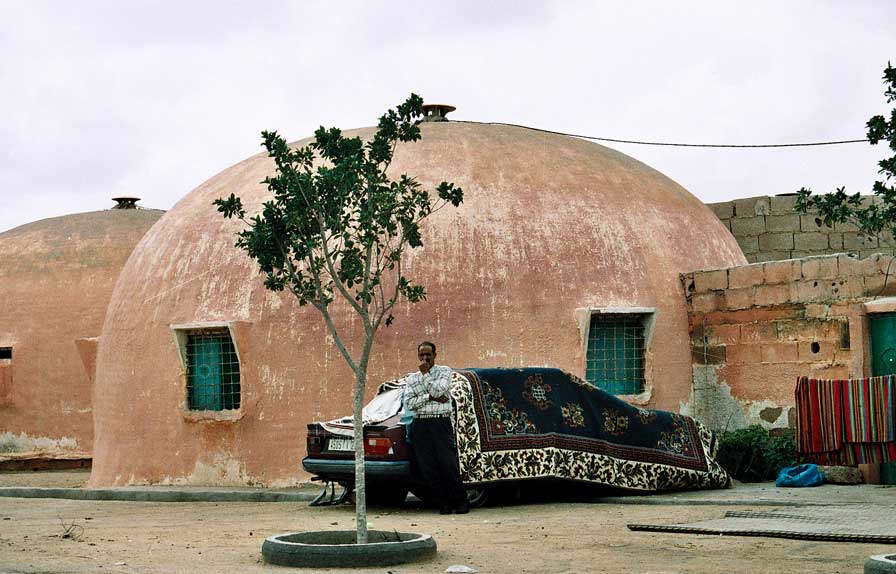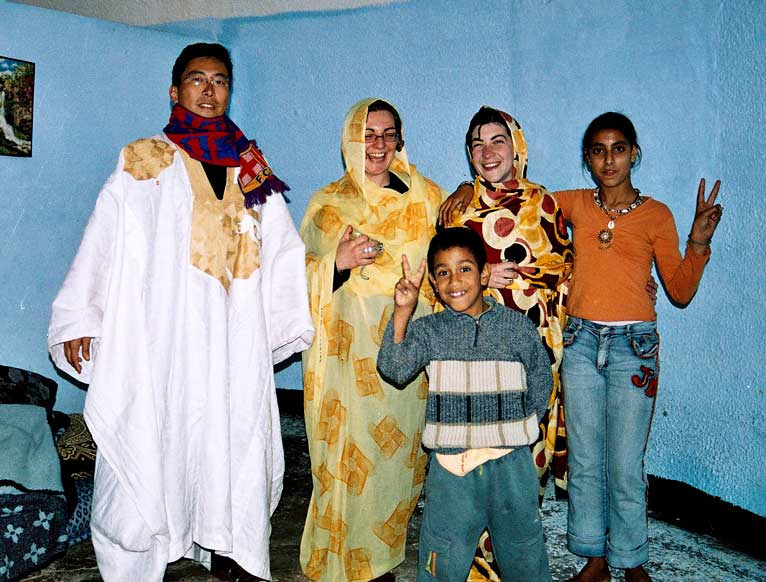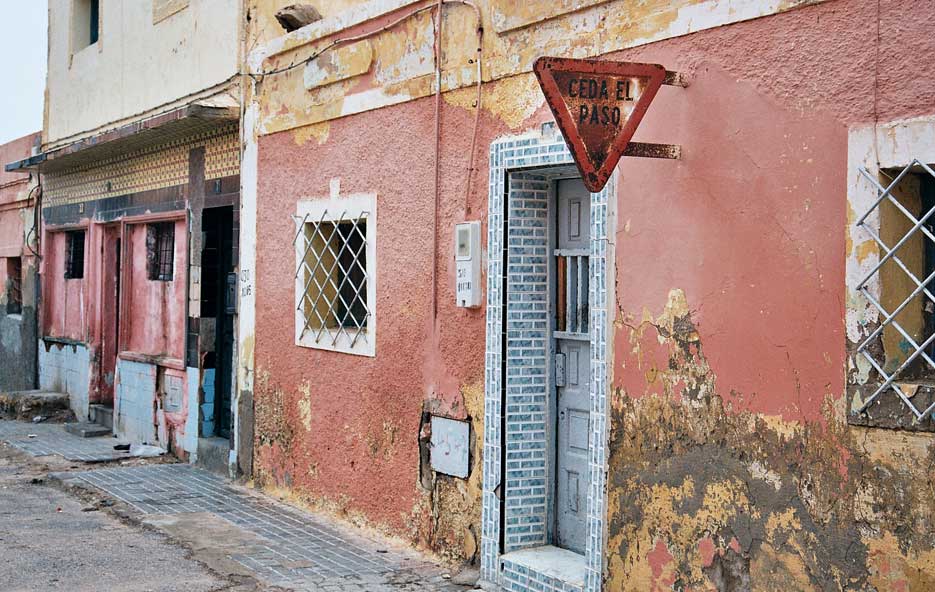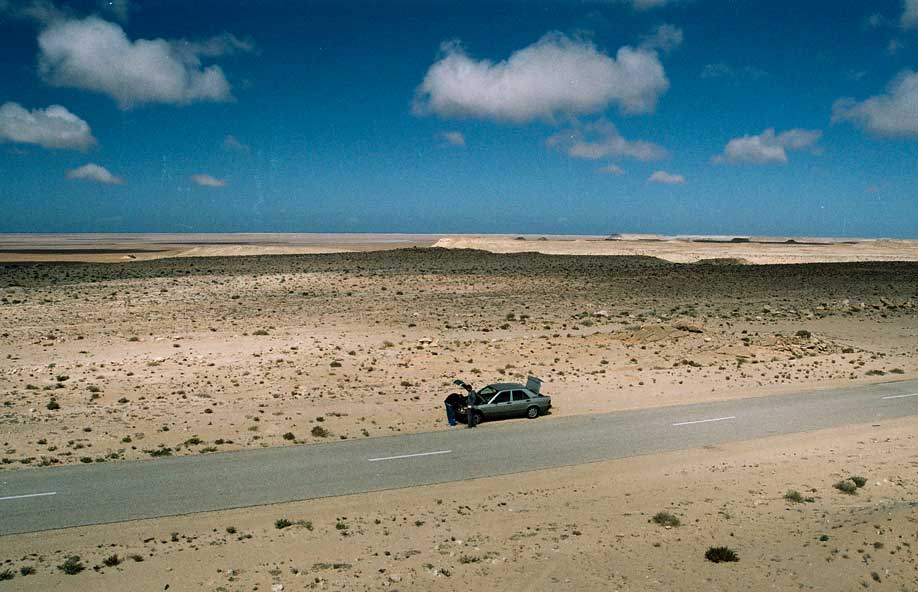Western
Sahara (Sahara occidental)

Brahim sees us staring at the Spanish built Sahraoui-style bubble house
in Laayoune and later invites us to have tea with his family.
Built in 1975 shortly before the Moroccan invasion of Western Sahara,
these houses are among the few testaments to its former Spanish
colonial past. It is a barren land with few inhabitants (Moroccan
immigrants to the cities probably outnumber native Sahraouis now) and
meager resources and little hope for prosperity as an independent
state. Though the UN still does not recognize Moroccan
sovereignty over Western Sahara, the annexation is much pretty much a
de facto reality now, as in Tibet or Alsace. It is illegal in
Morocco to possess any national map showing a boundary line between
Morocco and Western Sahara. I include Western Sahara as a
separate page mostly to poke fun at the Moroccans and indeed at rabid
territorial nationalism everywhere in the world. This war
created mortal enemies of Morocco and Algeria, which supported the
Sahraoui Polisario rebels, and travellers are still forbidden from
crossing the Morocco-Algeria border.

Inside the house, Brahim's family invites me and French travellers Odre
and Helene, to dress up in lovely, traditional Sahraoui costumes.
Sahraouis are pretty laid back and less formal than Moroccans.
Younger generations speak some French now, though older generations
still only speak Spanish, like Brahim.

An old alley in an unrefurbished neighbourhood in Laayoune, the Western
Saharan capital. Spanish signs and colours can still be found
outside of the Moroccan-built new town. With massive investments
to secure the annexation, the new town is as modern as any city in
Morocco proper.

We got a ride with car traffickers originating from Guelmim, a southern
Moroccan town. A network of traffickers buy cars in Europe and
take them down to the Mauritanian border to sell. Murad and
Nawfal are making repairs on the Mercedes-Benz 190D, the most sought
after vehicle in Mauritania, as the universal share taxi
workhorse. The 190D, according to auto enthusiasts, boasts a
legendary reliability and ease of repair, and is no longer driven in
Europe, so that auto parts can be supplied. You can see here what
99% of Western Sahara looks like and you wonder why 3 countries went to
war for it.<>



